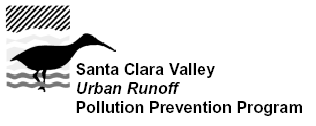Stormwater Runoff
- Vehicle Brake Pads
- Architectural Copper
- Pool/Spa/Fountain Algaecides
- Copper Pesticides
- Industrial Copper Use
- Soil Erosion
- Mobile Cleaning
- Vehicle Washing
- Vehicle Services
Discharges to POTWs
Shoreline Activities
Copper Algaecides
Copper containing
algaecides may be applied to waterbodies for control of nuisance rooted
and planktonic aquatic plants. The majority of copper algaecides treatments
to non-drinking water surface waters within the San Francisco Bay area
are to lagoons and sloughs bordering San Francisco Bay. Since shoreline
lagoons and sloughs generally release water directly to San Francisco
Bay, all copper applied to these waterbodies could potentially reach the
Bay. Actual releases are likely lower due to copper deposition in the
treated water body and/or adsorption to benthic sediments.
The primary control measure for copper-based pesticides applications to surface waters is the Aquatic Pesticide General Permit Program (managed by the State and Regional Water Quality Control Boards). The aquatic pesticide general permit, which was adopted May 20, 2004 (Water Quality Order No. 2004-0009-DWQ), requires an SWRCB Aquatic Pesticides Application Plan describing BMPs to mitigate effects to water quality resulting from pesticide application, monitoring and reporting of pesticide applications and monitoring results to the Regional Board Water Quality Control Board.
Copper algaecide use
has reportedly declined significantly since the adoption of these and
prior aquatic pesticide permit requirements. Other control measures required
by certain municipal stormwater permits include the development of performance
standards for lagoon aquatic pesticide applications.
